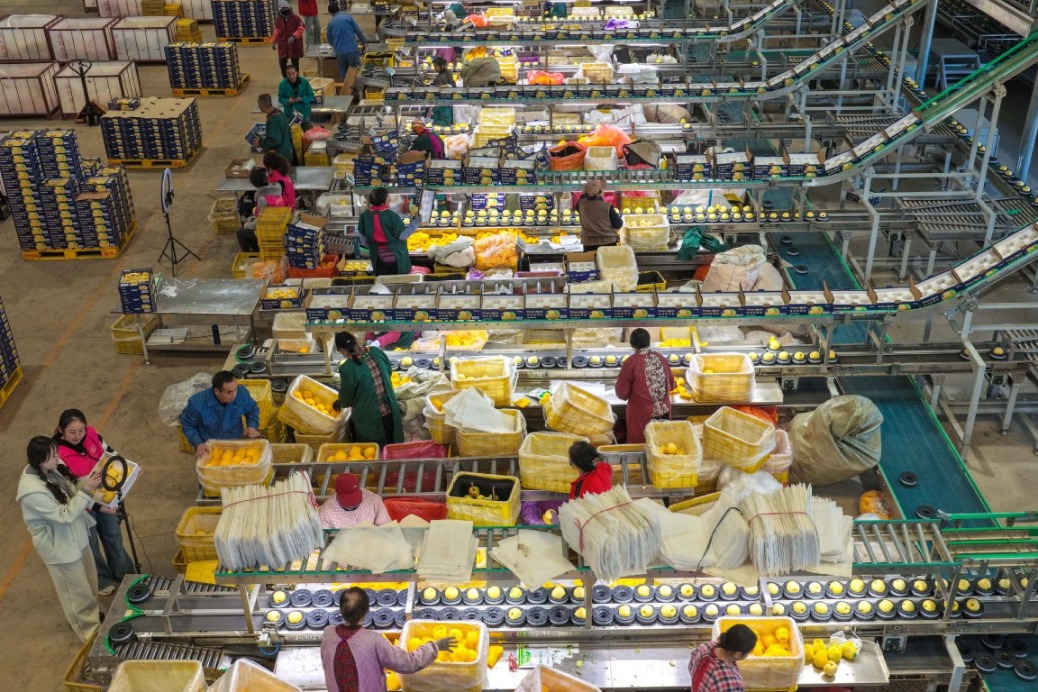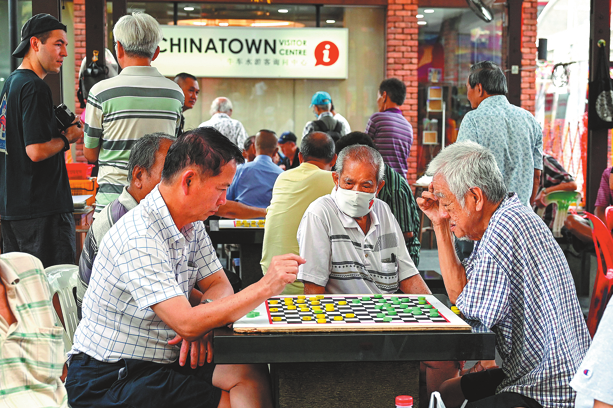US prisoners have become modern slaves
By Zhou Qi and Yang Weichao | China Daily | Updated: 2023-03-24 07:56

Americans tend to be indignant about "forced labor" in other countries but are unaware of the prevalence of forced labor in their own country. According to a report, "Captive Labor: Exploitation of Incarcerated Workers", published by the American Civil Liberties Union and the University of Chicago Law School's Global Human Rights Clinic on June 15, 2022, about two-thirds of the 1.2 million incarcerated people in federal and state prisons are subjected to "forced labor".
The about 800,000 "incarcerated workers" do many of the jobs that normal workers do, but with two key differences. First, prison workers are completely controlled by their bosses. And second, they are exploited and abused. As such, prison labor in the US is nothing but "modern slavery."
The 13th Amendment to the United States Constitution abolished slavery and involuntary servitude, except as punishment for crime. This means that, even though the 13th Amendment states that citizens should be protected against slavery and involuntary servitude, the state can force prisoners to work against their will.
The International Labour Organization's Forced Labour Convention (1930) and the Abolition of Forced Labour Convention (1957) have been accepted by 180 and 178 countries respectively and have become part of basic human rights. But the US has ratified only the latter, but not the former, arguing that it restricts the use of prison laborers by the private sector.
Prison laborers get little or no pay for the work they do. In 2021, the average pay was 13-52 cents per hour in the US, which has remained stagnant for years. But despite the wages being so low, the government takes up to 80 percent of the wages for "room and board" costs, restitution and other fees such as building and sustaining prisons.
With prison laborers paid so little, their families have to bear the loss of income due to the loss of labor as well as support for their incarcerated family member. In 2019, such families spent about $2.9 billion on their prison accounts and phone calls, and more than half of the families were forced to take loans to cover these costs.
Yet prison laborers in the US produce more than $2 billion worth of goods and provide more than $9 billion worth in maintenance services annually. Another 8 percent of the prison labor-force is assigned to public works projects, including maintaining cemeteries, school grounds and parks; building roads and houses; and disposing garbage and hazardous materials.
At least 30 US states count prison laborers as a source of labor in their disaster and emergency response action plans. And in 14 states, prison firefighters are deployed to douse wildfires.
Less than 1 percent of the prison budget goes to pay prison laborers, but more than two-thirds are used to pay prison officials. Still, some government officials have voiced opposition to reducing the prison and prison population, because it would reduce the number of prison laborers. Although the number of prisoners in the US has fallen steadily since 2008, the country still has the highest incarceration rate in the world. When prison labor is used as cheap labor, the US judiciary is held hostage to private desires.
The condition of prison laborers worsened during the COVID-19 pandemic. At the time when most people in the US chose to stay at home to avoid contracting the novel coronavirus, prison laborers were forced to work outside the prisons and were thus exposed to the virus. Those refusing to work were threatened with solitary confinement or other punishments.
Almost every state has reported the participation of prison workers in containing the pandemic, with prison workers in Michigan, Missouri, New York, Oregon and Texas being at the highest risk of exposure to the virus. They were forced to do the laundry for hospitals, work in mobile morgues, transport bodies, make coffins and dig mass graves.
While prison workers in more than 40 states were required to produce face masks, hand sanitizers, and personal protective equipment during early pandemic-induced lockdowns, they themselves could not use them. Florida prisons suspended inmates' meeting with their families for safety reasons, but still forced the prisoners to build roads, unclog sewers and provide government relocation assistance.
According to the US COVID Prison Project, as of Aug 26, 2022, the number of inmates infected with COVID-19 exceeded 614,000, with about 3,000 deaths. Even as the pandemic raged in the US, 16 states didn't include incarcerated people in their phase one vaccination drive.
According to a 2021 Bureau of Justice Statistics survey, the majority of prison workers (over 70 percent) said the most important purpose of their work is to acquire vocational skills that they can use to build careers after release, but prison labor programs hardly meet their expectations. In fact, the vast majority of work in prisons involves monotonous or repetitive tasks. Job training programs in US prisons are shrinking, and a major share of the work is maintenance and repairs. As a result, when prisoners are released, they have little or no money and face discrimination and state occupational licensing restrictions that prevent them from working in the fields in which they were trained in prison.
"The U.S. prison system claims to offer rehabilitation to its population, but prison labor programs do just the opposite," says Mariana Rosenblat, a faculty member at the University of Chicago and a fellow at the Global Human Rights Clinic.
American politicians claim to be firm defenders of human rights. In the face of forced labor and exploitation in US prisons, shouldn't they do some serious soul searching?
Zhou Qi is a researcher at the Institute of American Studies of the Chinese Academy of Social Sciences. Yang Weichao is a PhD student at the University of the Chinese Academy of Social Sciences.
The views don't necessarily represent those of China Daily.
























